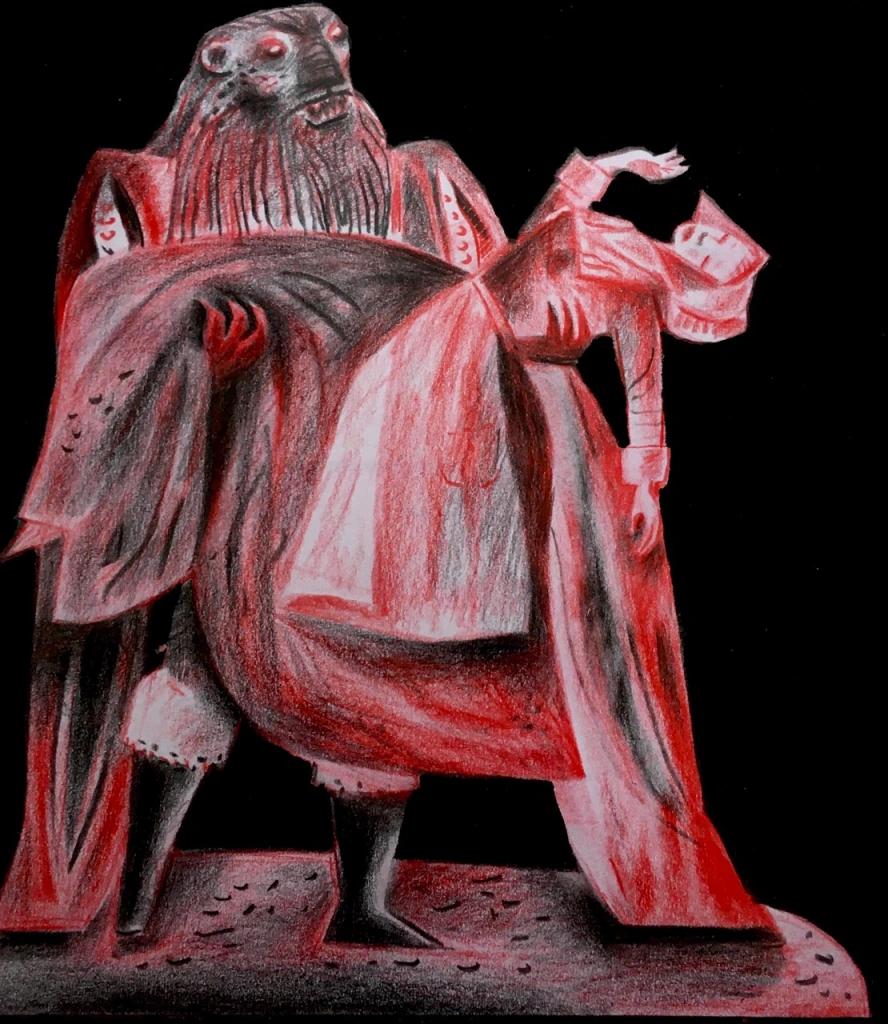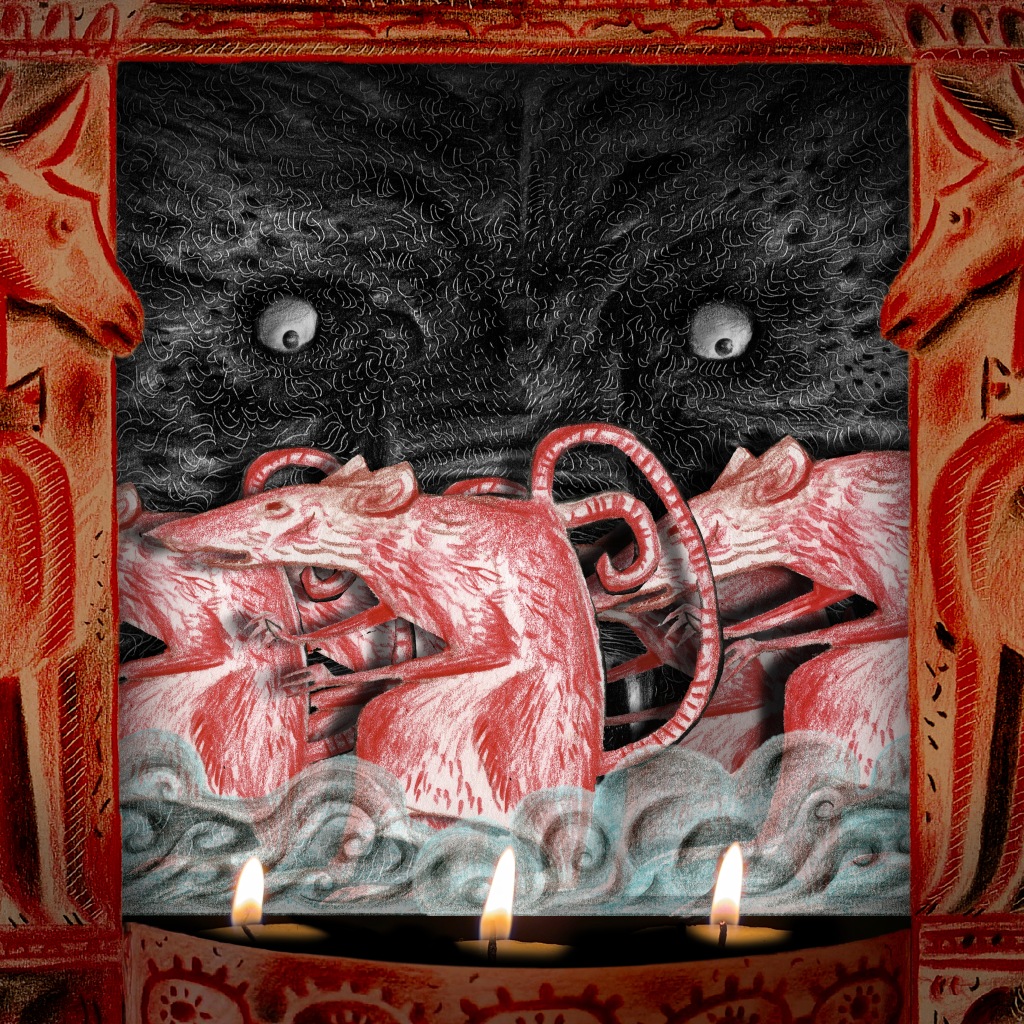
The completed film of the Design for Today Beauty & Beast Toy Theatre that David W. Slack and I have been working on over the past several months, is now available for viewing at YouTube:
The film was made and originally released in five one-act instalments at Instagram. We’d intended it to be a promotion for the just published toy theatre and an encouragement for would-be performers, to show them what might be achieved with the model. However it swiftly evolved into something that was a creative project in its own right, and as David and I planned and worked, our ambitions for the film became greater.
Even though we elaborated on the presentation in ways that were clearly only possible in the realms of digital animation, we felt that the overall effect would be to encourage anyone performing the toy play to be inventive and give creativity a free hand.

I’d asked Olivia to give me a play-script that incorporated all the traditions I associate with nineteenth century toy theatre productions: actors directly addressing the audience, rhyming verses, jokes, songs, political references, allegorical characters and opportunities for sumptuous stage effects. But it was important too to have that sense of the slightly bonkers that I see in just about every historic toy theatre play script. Fairy tale is the right material to be allowed its head in matters of strangeness. Too much sanitising and it loses character. Beauty and the Beast as a narrative can be so much more than is usually allowed. Olivia has followed the threads of earlier iterations, but has reinvigorated the tale by making climate change and pollution the culprits for Beast’s condition, rather than a dark fairy’s curse. Moreover Beast is allowed to be more thoroughly himself than when the storyline moves toward a princely restoration. (When Jean Cocteau gave a first showing of his film La Belle et la Bête (1946) to its cast and technicians, he invited his friend Marlene Dietrich as his guest. As the end credits rolled she could be heard in the darkened viewing-room loudly wailing:
“Ou est ma Bête?”
Most audiences ever since have agreed with her.

The Beauty & Beast Team:
Animated Film: David Slack & Clive Hicks-Jenkins
Script: Olivia McCannon
Original Music for Time for a Change of Heart: Paul Sartin
Narrator: Jennifer Castle
Jennifer Castle’s Portrait Photography: Ross Boyask
Accompaniment for Time for a Change of Heart: Tricia Kerr Mullen
Adapted from the Beauty & Beast Toy Theatre published by Joe Pearson at Design for Today

The Design for Today Beauty & Beast Toy Theatre (see above) may purchased online, direct from the publisher:
All toy theatre is an abbreviation, by reason of the medium. Fifteen minutes is about the maximum length a toy theatre performance can sustain. However the complete fairy tale as retold by Olivia McCannon in Beauty & Beast, illustrated by me throughout, is to be published by Design for Today in Spring this year.
























































